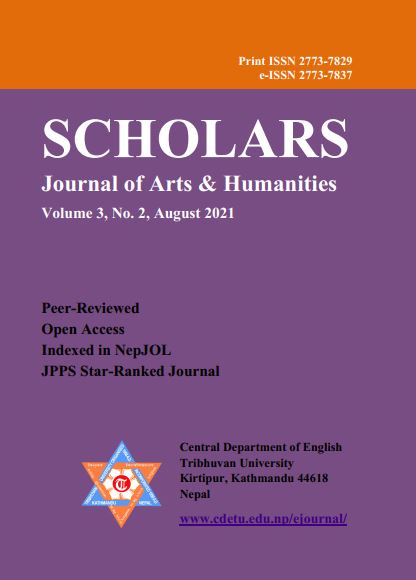The Nature-Human Relationship: An Ecocritical Reading of Self in Keats’ Poem
DOI:
https://doi.org/10.3126/sjah.v3i2.39432Keywords:
Fusion, self, nature, ecocritical perspective, deep ecologyAbstract
This study analyzes the fusion of self and nature in John Keats's ode "Ode to a Nightingale" from ecocritical perspective. To do so, the ecocritical insights envisioned by Arne Naess, Bill Devall, George Sessions and Timothy W. Luke have been used as theoretical parameters to analyze the primary text. As the focus of the deep ecological trend, the uniformity between the human self and nature is represented in this text. This uniformity restores the significance of realizing the self with nature. This realization leads to the fusion. The fusion combines harmonious relationship between the self and nature to form a single entity. Due to this process, the selected primary text merges human beings and natural sublimity by means of a nightingale bird. When human beings cannot make positive attitude towards nature and act accordingly, their self does not get chance to be attached with nature. Nature is essential for all entities. The destruction of natural world causes the destruction of self. This destruction gets a solution only when there arises symbiotic bonding between human beings and nature. This bonding adds new knowledge in the existing scholarship being itself different from the previous research works.
Downloads
Downloads
Published
How to Cite
Issue
Section
License
Copyright (c) 2021 Central Department of English, Tribhuvan University and Authors

This work is licensed under a Creative Commons Attribution 4.0 International License.
© Central Department of English, Tribhuvan University and Authors




